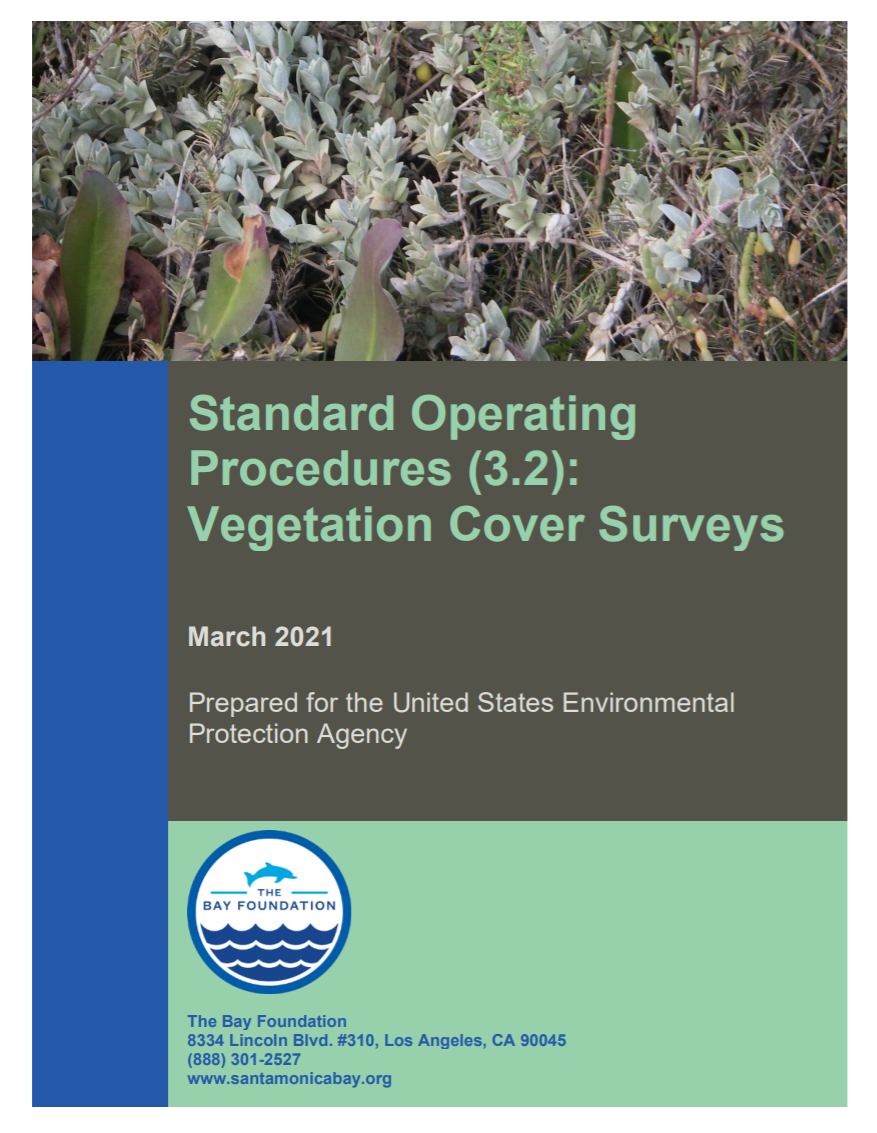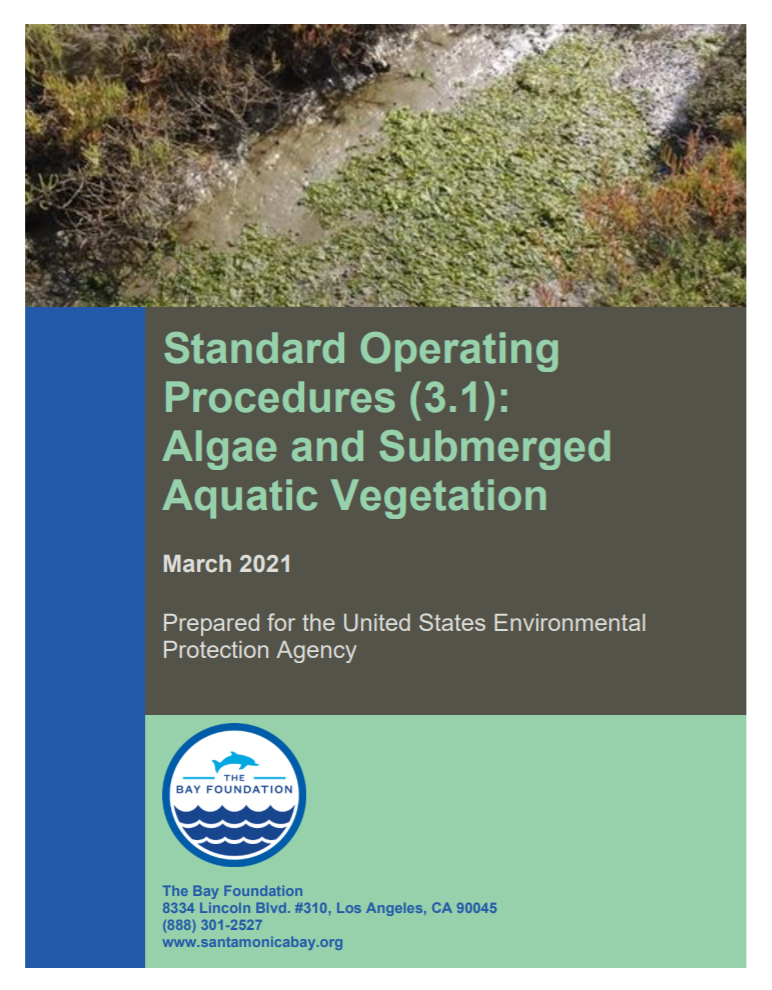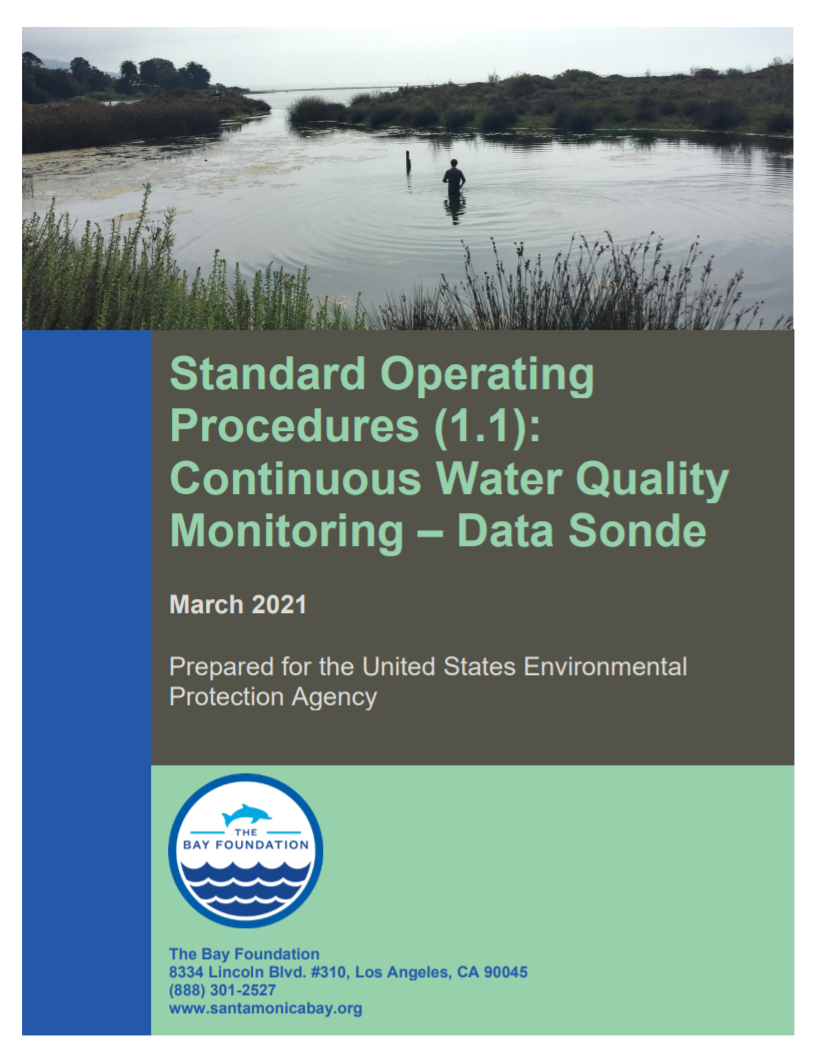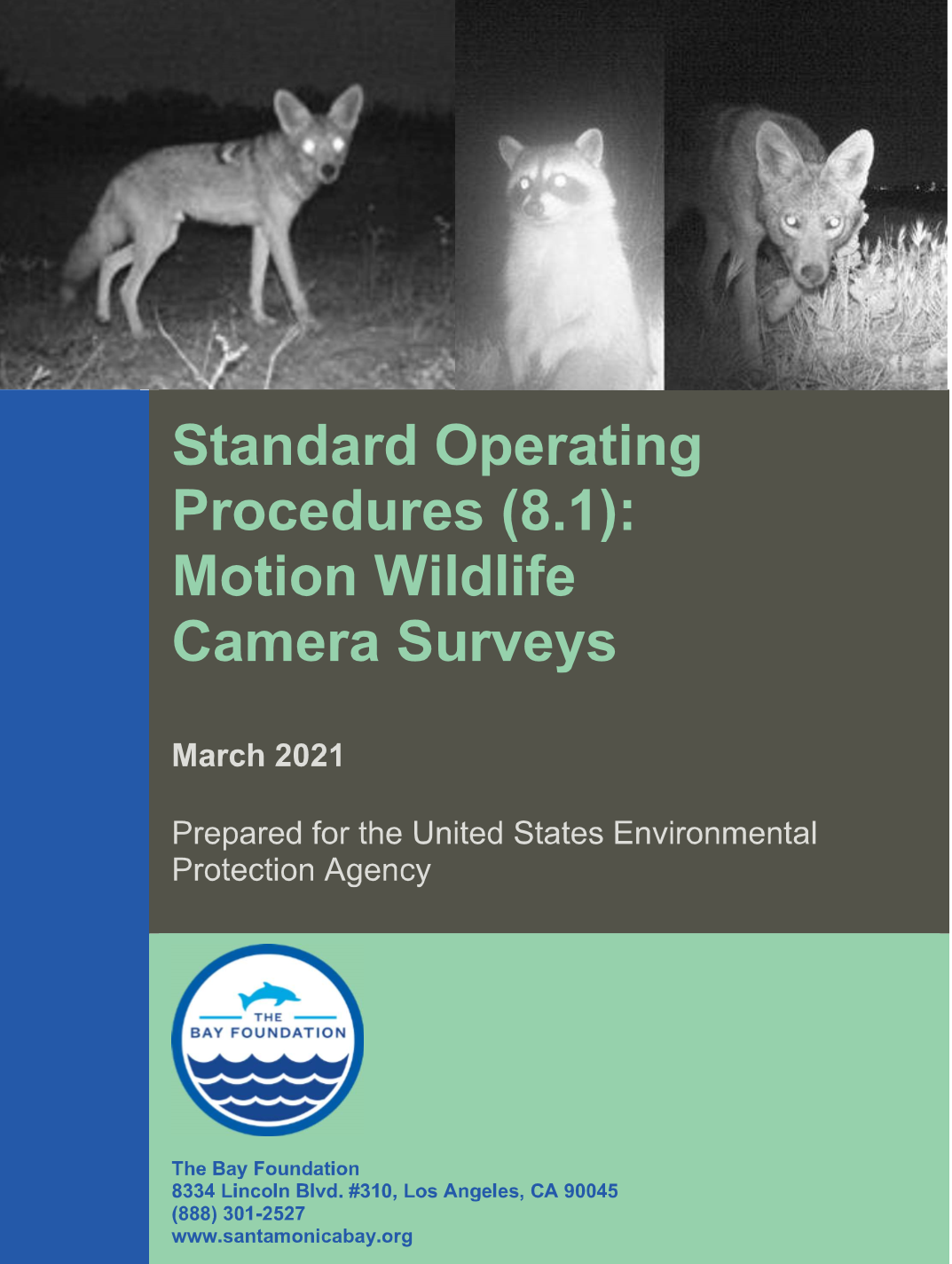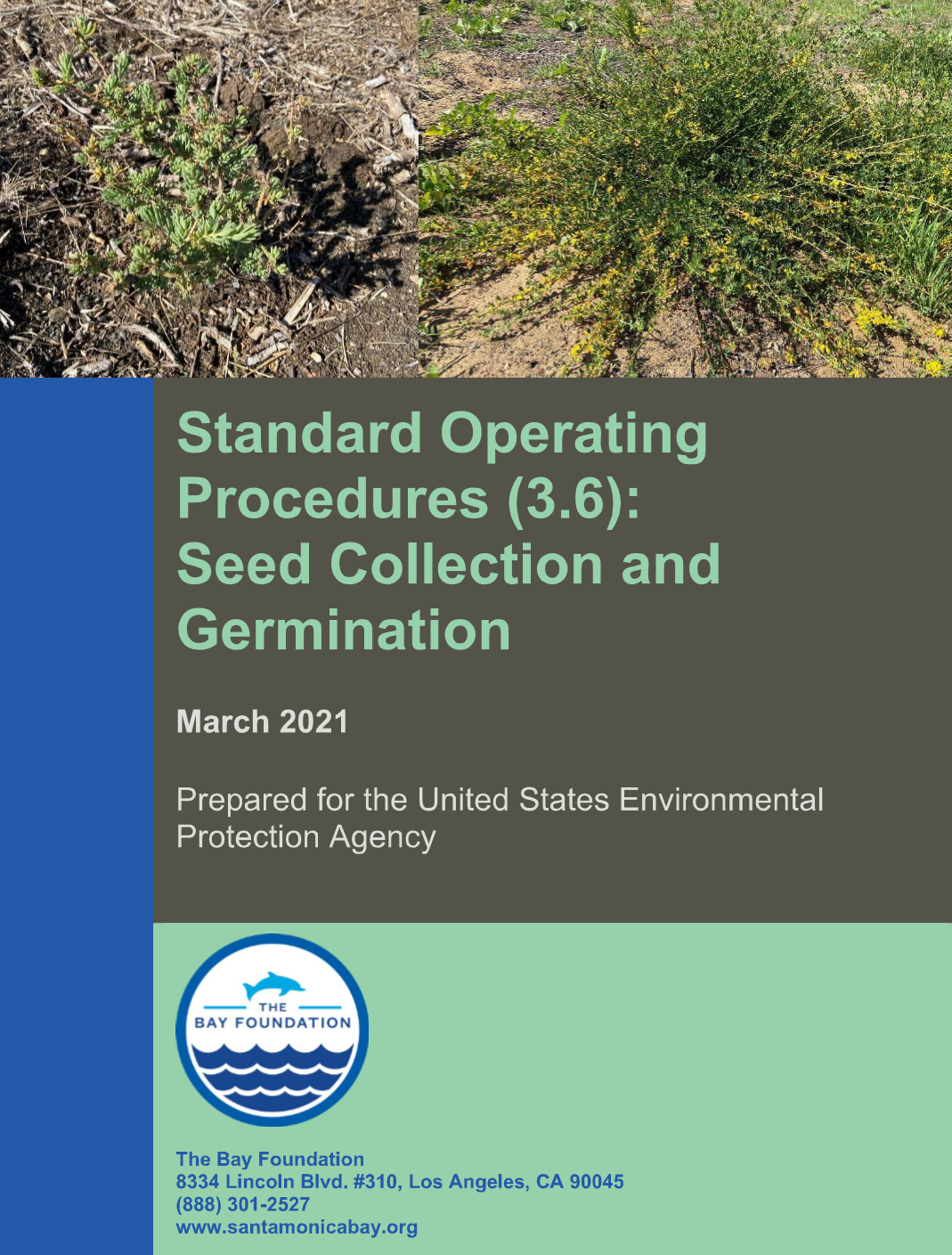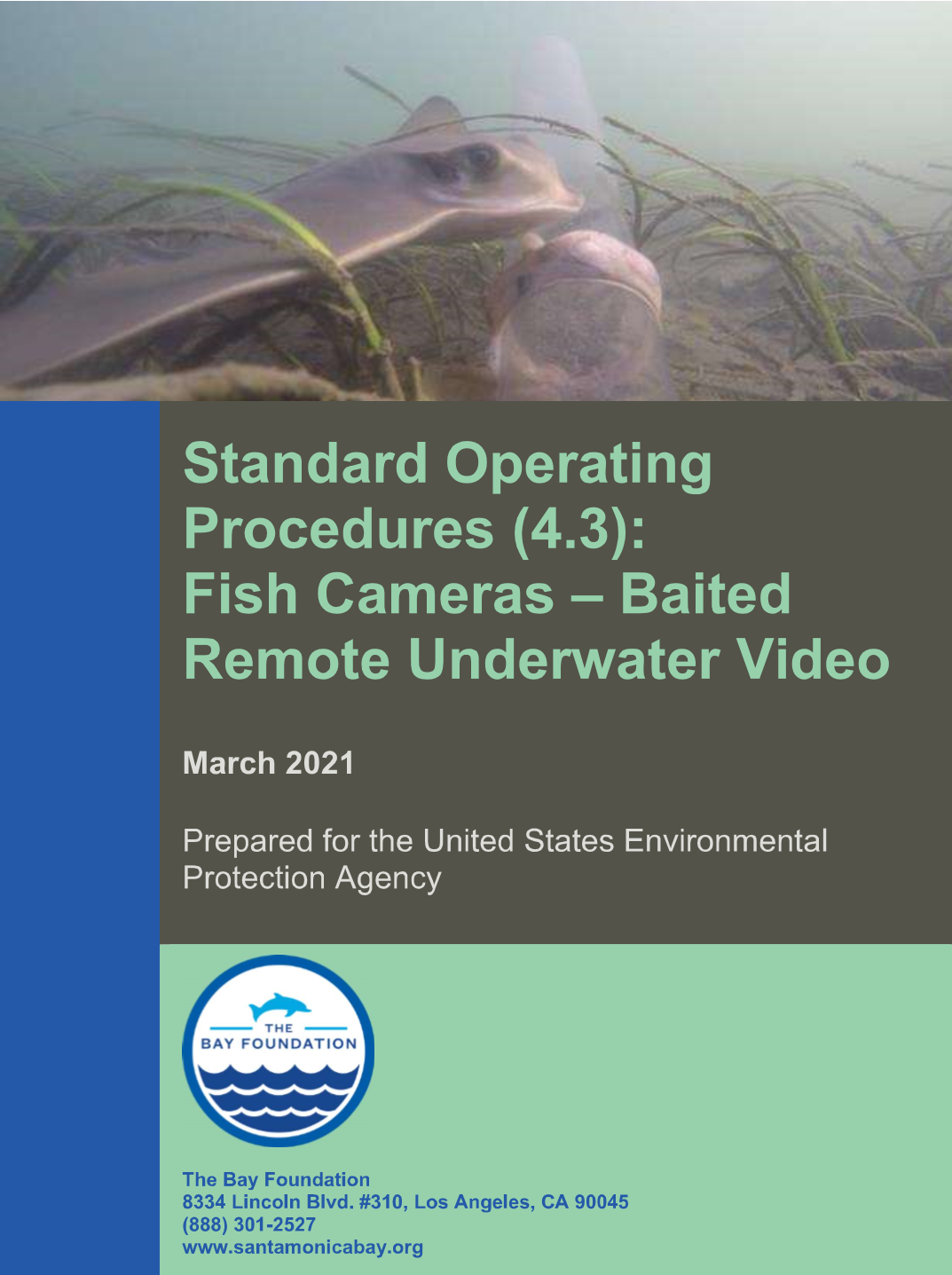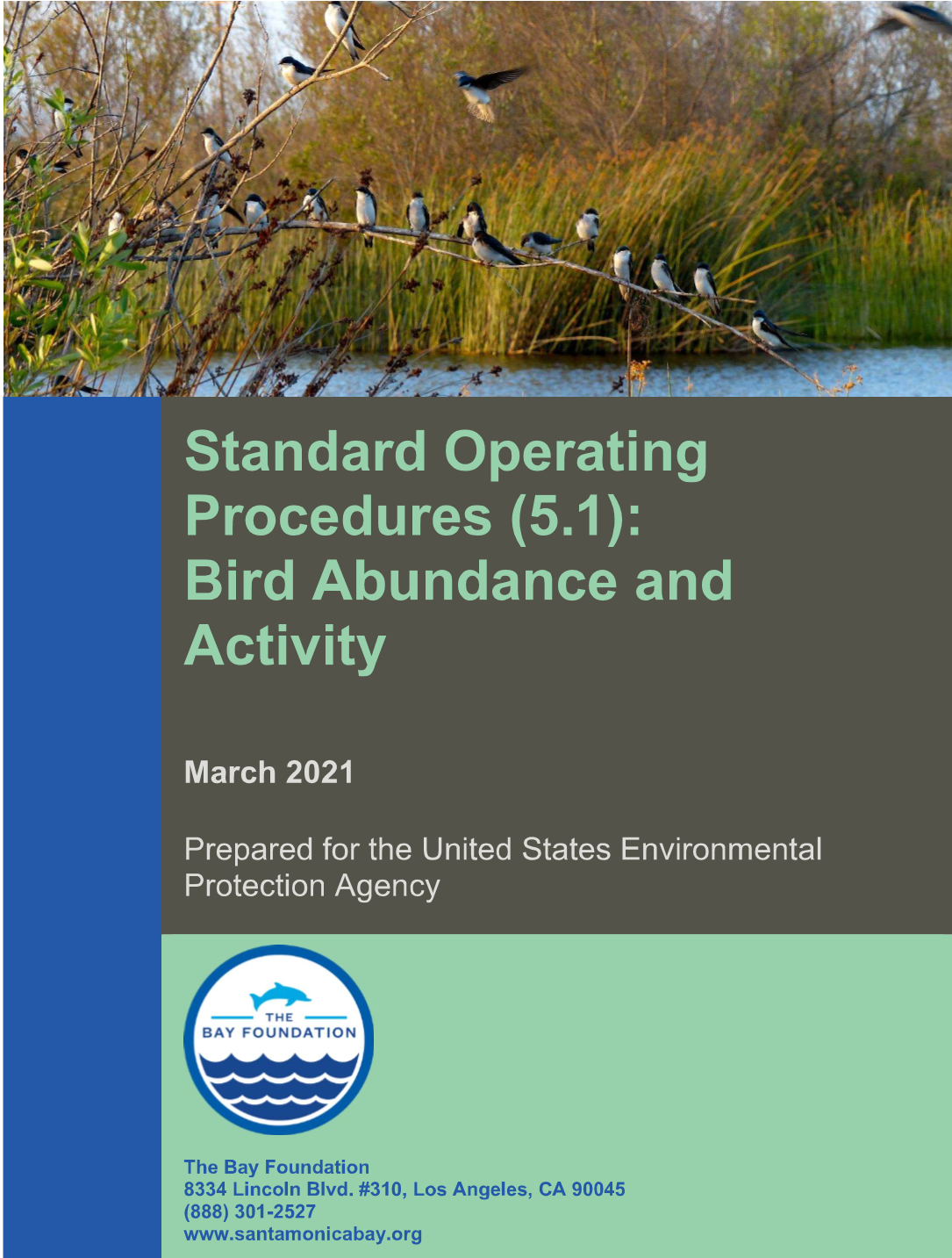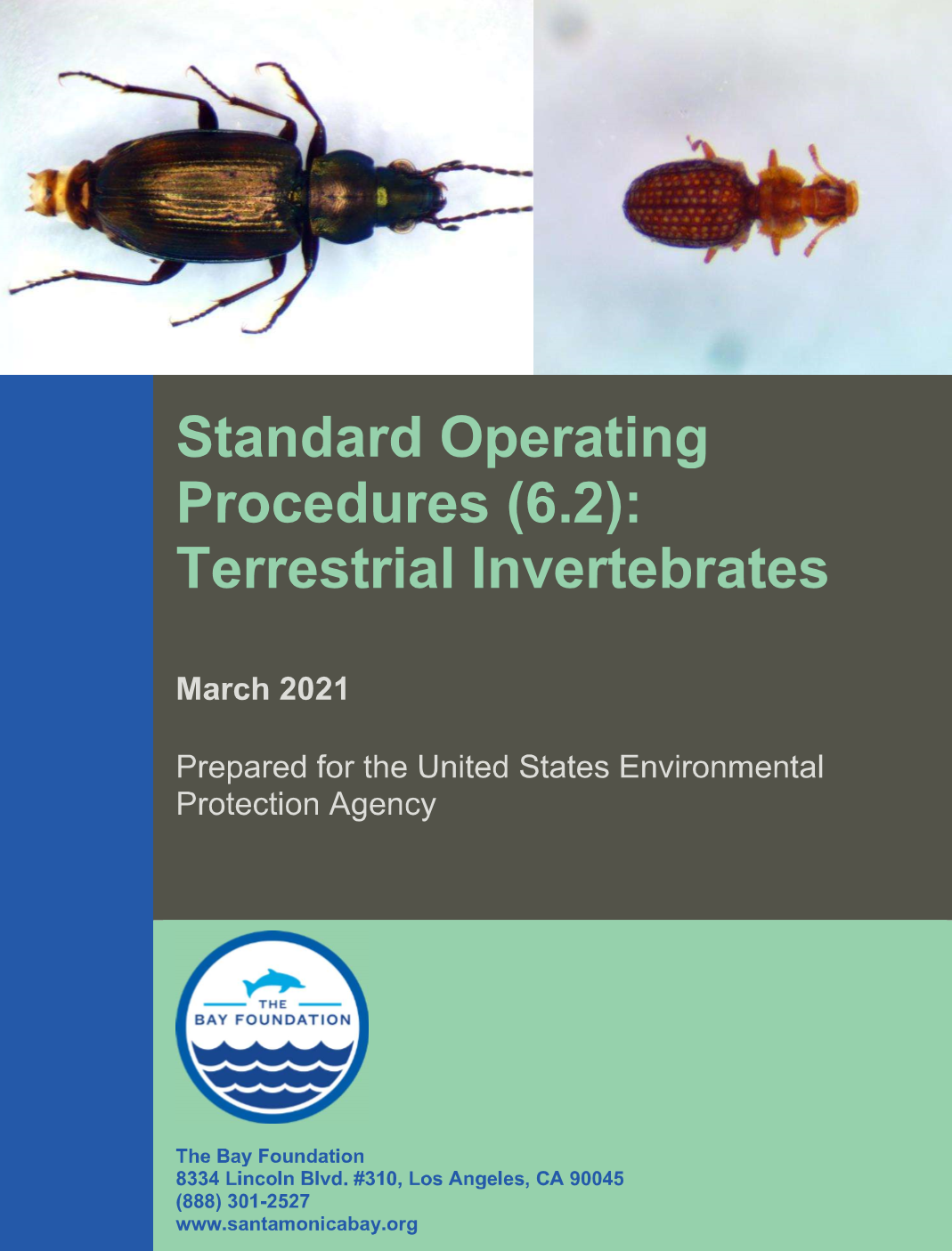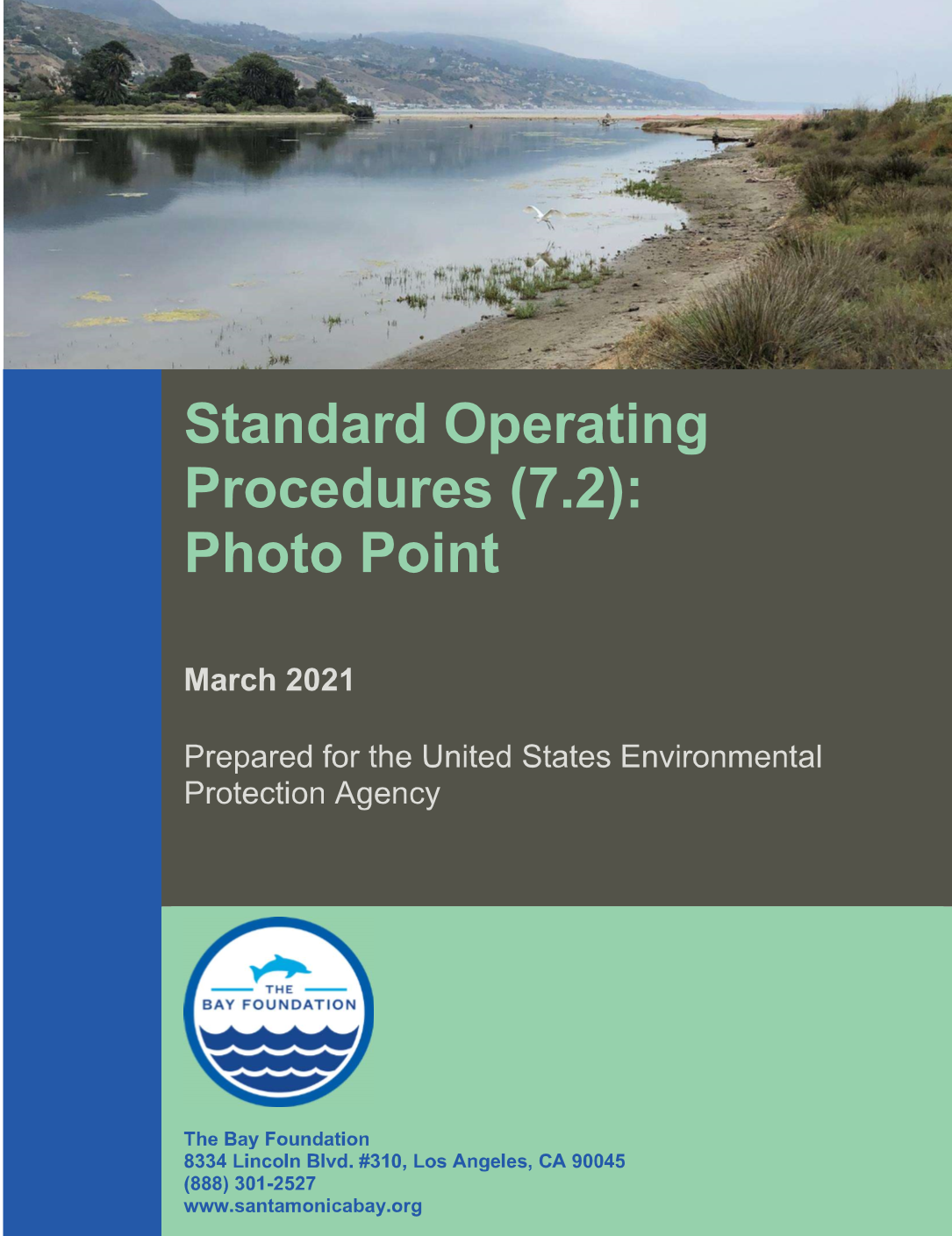This detailed report outlines vegetation cover survey evaluation techniques. Prepared for the United States Environmental Protection Agency.
Resource Type: Project Documents
Standard Operating Procedures (3.1): Algae and Submerged Aquatic Vegetation
This detailed report outlines algae and submerged aquatic vegetation evaluation techniques. Prepared for the United States Environmental Protection Agency.
Standard Operating Procedures (2.1): Soil Salinity, Texture, and Pore Water
This detailed report outlines soil salinity, texture and pore water monitoring evaluation and measuring techniques. Prepared for the United States Environmental Protection Agency.
Standard Operating Procedures (1.1): Continuous Water Quality Monitoring – Data Sonde
This detailed report outlines water quality monitoring evaluation and measuring techniques. Prepared for the United States Environmental Protection Agency.
Standard Operating Procedures (8.1): Motion Wildlife Camera Surveys
Standard Operating Procedures for Motion Wildlife Camera Surveys. Prepared for the United States Environmental Protection Agency.
Standard Operating Procedures (3.6): Seed Collection and Germination
This document outlines the basic seed collection and germination strategies to be employed within southern California estuarine and adjacent upland habitats. For more detailed information on specific plant species, see Barton et al. 2016, published in the Bulletin of Southern California Academy of Sciences, which lists available information for 84 native plant species common to… Continue reading Standard Operating Procedures (3.6): Seed Collection and Germination
Standard Operating Procedures (4.3): Fish Cameras – Baited Remote Underwater Video
Defining the fish assemblage of a wetland can be difficult, due to the highly mobile nature of the fauna. Characterizing wetland fish assemblages is often a primary goal of monitoring efforts, but besides the mobility, there are often inherent biases associated with sampling methodologies. Therefore, it is often advantageous to use a variety of methodologies… Continue reading Standard Operating Procedures (4.3): Fish Cameras – Baited Remote Underwater Video
Standard Operating Procedures (5.1): Bird Abundance and Activity
The primary purpose of these observational sampling methods is to develop maps of species presence and distributions including information on rare species, to quantify a snapshot of the avian community, and/or to supplement historical or volunteer data. Additionally, recording activity of each species will allow for an assessment of higher ecological function of the survey… Continue reading Standard Operating Procedures (5.1): Bird Abundance and Activity
Standard Operating Procedures (6.2): Terrestrial Invertebrates
Terrestrial invertebrates are a vital component of wetland food webs and are indicators of the overall health of a system (Zedler 2001). The primary purpose of this sampling method is to document aerial and epigeal (above soil surface) arthropod productivity (as biomass per unit area, or biomass per day) for each habitat or area by… Continue reading Standard Operating Procedures (6.2): Terrestrial Invertebrates
Standard Operating Procedures (7.2): Photo Point
The primary purpose of this sampling method is to capture broad changes in the landscape and vegetation communities over seasons or years or to visually track restoration trajectories over time. This method collects georeferenced photos for use in site management (e.g., invasive species tracking) and long-term data collection. Each year (or seasonally), photograph(s) taken at… Continue reading Standard Operating Procedures (7.2): Photo Point
